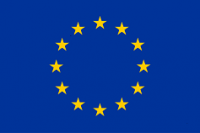This blog post concerns the ongoing empirical work of the Danish team and is therefore work in progress.
In the INVENT project, we have been busy collecting different types of data via methods such as interviews, focus groups, case studies, and data scraping. Inspired by insights from previous data collections, the Danish team followed the traces of digital inequalities, which crystalized through the various user-centred studies. So, in this blog post, we would like to share some insights into ongoing research.
Though Denmark can be considered a highly digitalized country, there is a growing concern in both society and in the literature about leaving some citizens behind, creating new forms of inequality in a digital society (i.e., Hargittai & Hsieh, 2013; Mihelj et al., 2019). Those perspectives were uncovered through INVENT’s bottom-up approach to conducting research, which has led us to follow up on the many concerns voiced by our participants.
Drawing on our analysis of cultural e-petitions in Phase II of our data scraping, we found several petitions raising awareness for the digital exclusion of certain groups of society due to an increased digitalization of public services. We followed this path further in Phase III of the data scraping, exploring online posts on Twitter and Facebook about the implementation of the new Danish digital citizen identity, MitID, which was accompanied by public criticism. This perception of being left out of society due to lack of access, lack of digital skills, was also one of the findings from our interviews. So, to follow up on this emerging trend in Denmark, we chose to dedicate one focus group to the topic of digital inequality.
We invited professionals and volunteers from different organisations, who work with promoting digital skills and digital inclusion to discuss current challenges and solutions for active digital participation. In the following, we will highlight some of the main points that came up in the discussion about usage inequality and the digital society
Digital society for whom?
In the focus group discussions, participants mentioned that there are specific groups of people, due to a variety of reasons, that are more likely to be challenged by the fast developments in digitalization. In their experience, it is those people that more frequently will ask for or receive support with digital or IT challenges, for example IT courses. Among the various groups of interest mentioned and represented were older adults, persons with disabilities, unhoused persons, socially disadvantaged or vulnerable persons. This shows that even in a highly digitalized welfare state such as Denmark, not everyone is included in a digital society.
The centrality of the smartphone as a key to digital participation
Echoing insights from the interviews, the participants of this focus group highlighted the central role of the smartphone for being able to access important digital services. This then also implies a dependence on this digital device for being able to participate in a growing number of activities and connect to public life.
“But on the whole, the world is moving towards it being smartphones that we use and our smartphone, it is, I think, it is our wallet today in many ways, it is the one we carry, it is our wallet, it is our handbag for everything. […] but everything where you need to be a citizen- digital citizen today, it’s actually the smartphone.”
On top of that, navigating a digitalized society comes with an overwhelming number of services, apps, and platforms. This can lead to confusion caused by many different platforms and apps that must be used to access various (public) services.
One of the examples mentioned in this focus group interview connects the reasons behind inequality to the production conditions of the technologies. For instance, public library service technologies were outsourced to private companies in hope for better quality due to competition.
“I am from the library world, where we introduced IT many, many years ago and when we were going to have all that user-generated stuff, where you could also use our catalogues from home and things like that, that whole development came to a standstill, because they wanted to make it as perfect as possible and then all those extra offers came along, because they thought competition could make it better, but it didn’t, and I think there’s a similarity to this with the [public service] mailboxes: you let in some new suppliers and it doesn’t really get much better. There are just too many and it confuses people who are not so IT-savvy.”
Acknowledging that the problem won’t just solve itself
One of the participants described an initial hope that problems concerning digital divide and inequality would solve themselves with time, as new generations naturally learn to use new devices and services. However, some years later, this non-invention approach has clearly not contributed to an improved situation.
“We have been working with digital inclusion at [name of organisation] since ’15, because the first solutions, digital mail, NemID and these self-service solutions, were something we kind of initiated and then we kind of became aware that there was a group that had difficulty with it and at first I think it was assumed that it would pass when the generations changed and then suddenly the whole country was very digital, so whether it’s parking apps or checking the thermostat, […] the whole country has been digitalized and everyone has gradually realized that this, it’s not going to go away, we’ve been trying to say that all along, but now the others have understood it too, and that’s also why it actually it was added to the government platform, there’s the thing about digital inclusion, I never dreamed of that when we started out there in the corner.”
Solutions
The focus group participants represented different interest organisations that offer various forms of support for people who are challenged by digitalization. Such activities are for example so called IT cafés, IT help, IT volunteers, courses, and personal consultations (at public locations such as libraries, as well as mobile services). Central to those activities is the understanding that personal, individual help is very valuable, as many people struggle not only with lack of skills, but moreover lack of confidence and ability to articulate their needs.
“so a lot of our IT work in the café I’m in is really about, well, we sometimes call it ”IT hygge”, because it does something, they have to learn, they shouldn’t be afraid to use that thing there, it doesn’t bite or totally break all the time, so, there’s someone like that, of course, you have to learn that just like in theory you should wash and clean your bike and your bike chain and stuff like that, there’s some maintenance, but that’s all you need.”
The examples here illustrate how digitalization influences and sometimes restricts the possibilities to participate in everyday lives and culture, as well as the approaches that are taken by organizations to help people cope with this development.
These insights from the various data collections echo discussions in the literature. Even though Danish citizens’ digital skills are higher than the European average, critical voices question the implications of the advanced level of digitalization for Danes’ everyday life, especially for a citizenry that may not be suitable equipped to keep pace with these developments. That applies particularly to those members of Danish society that for various reasons are left behind by digitalization and, as a result, are excluded from public services or face challenges regarding access to their own finances. Such criticism speaks to the scholarly debates about first, second, and third level digital divides, that is, divides in citizens’ access to the internet, their skills in using the internet for various purposes, and the tangible outcomes of such digital divides in terms of people’s opportunities for getting ahead in life (Van Dijk, 2020). Van Deursen and Helsper (2015, p. 30), for example, show that “the internet remains more beneficial for those with higher social status, not in terms of how extensively they use the technology but in what they achieve as a result of this use for several important domains”.
The digital inequality exploration illustrates that, as one of the megatrends investigated by the INVENT team, digitalization presents both challenges and opportunities for European governments and for citizens in their everyday life. Future research and recommendations for more inclusive cultural policies should have a special focus on those challenges that do not seem to just disappear with generational change, but that need to be addressed directly. A growing strand of critical technology research is pointing towards forms of discrimination and exclusion by design (Broussard, 2023; Costanza-Chock, 2020; Köttl et al., 2021), which must be taken seriously if the ideal of an inclusive digital society should be met.
Broussard, M. (2023). More than a glitch: Confronting race, gender, and ability bias in tech. The MIT Press.
Costanza-Chock, S. (2020). Design justice: Community-led practices to build the worlds we need. The MIT Press.
Hargittai, E., & Hsieh, Y. P. (2013). Digital Inequality. I W. H. Dutton (Red.), The Oxford Handbook of Internet Studies (s. 0). Oxford University Press. https://doi.org/10.1093/oxfordhb/9780199589074.013.0007
Köttl, H., Gallistl, V., Rohner, R., & Ayalon, L. (2021). “But at the age of 85? Forget it!”: Internalized ageism, a barrier to technology use. Journal of Aging Studies, 59, 100971. https://doi.org/10.1016/j.jaging.2021.100971
Mihelj, S., Leguina, A., & Downey, J. (2019). Culture is digital: Cultural participation, diversity and the digital divide. New Media & Society, 1461444818822816. https://doi.org/10.1177/1461444818822816
van Deursen, A. J. A. M., & Helsper, E. J. (2015). The third-level digital divide: Who benefits most from being online? Studies in Media and Communications, 10, 29–52.
van Dijk, J. (2020). The digital divide. Polity Press.



 This project has received funding from the European Union’s Horizon 2020 research and innovation programme under grant agreement No
This project has received funding from the European Union’s Horizon 2020 research and innovation programme under grant agreement No
Leave A Comment